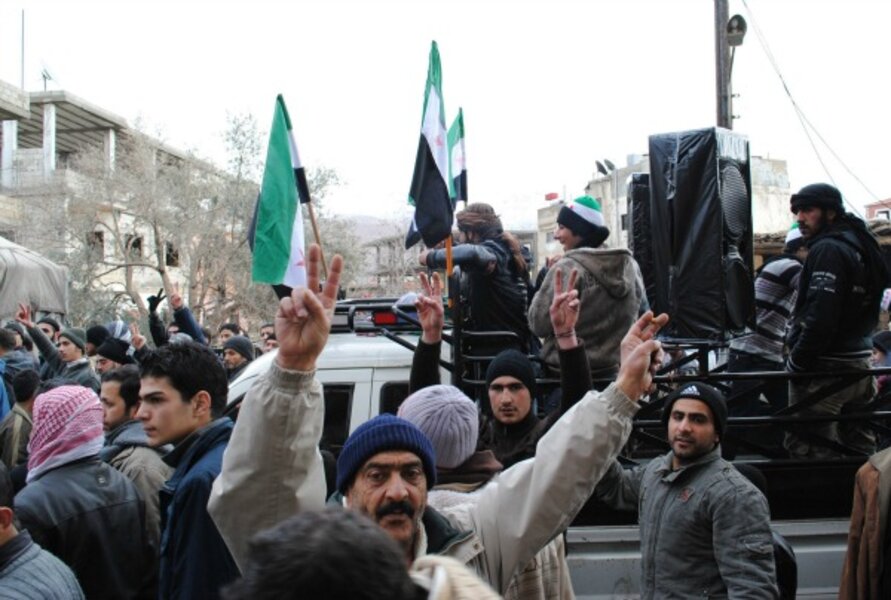Syria's quagmire points to eventual foreign intervention
Loading...
| Tel Aviv
Much of the analysis of the crisis in Syria looks at the upheaval through a binary lens: Either Bashar al-Assad manages to defeat his political opponents and his regime survives, or the regime collapses and a new political leadership takes control of the country.
But there is a third, increasingly more realistic, possibility: prolonged internal violence under a weakened and failing – but neither defeated nor failed – Assad regime.
Under this framework, a better question to ask about Syria’s future would be: How long can a regime function in this “failing state limbo” and how long can it endure massive internal violence before imploding?
In Syria, the answer depends on three main factors: the strength and cohesion of the regime and its coercive apparatus, the strength and cohesion of the civil opposition to the regime, and the degree of international involvement. A brief analysis of these three elements explains why the prolonged-violence scenario seems the most likely for Syria and the Assad regime.
First, President Assad can count on a relatively strong and united regime and, specifically, he can count on the loyalty of the Army and coercive apparatus. Unlike in Tunisia and Egypt, the Syrian military and security branches are closely identified with and connected to the regime. The potential downfall of Assad directly threatens their own status and power, giving them a strong incentive to continue backing him.
Similarly, the patronage networks created in the past decades by the minority Alawite rulers now serve as an additional incentive for security personnel and government officials alike to stand by the regime. In this sense, the regime is still strong and internally cohesive, despite some defections from the security and policy offices.
Second, in contrast to the relative unity of the regime, the opposition forces – although having risen in power and status and being able to seriously threaten the regime – still lack strong internal cohesion.
Judging from the little and not always reliable information coming out of Syria, the opposition forces have so far failed to create a truly inter-sectarian coalition (the opposition is mostly Sunni, with other groups – like the Kurds – remaining at the margins, fearing retaliation from the regime). The internal division is not surprising, considering the regime targeted and suppressed political opponents for decades.
Third, despite it’s involvement, the international community – and this definitely also applies to the Arab League – has not been willing to strongly take sides in Syria, as it did in Libya. Short of this type of intervention – which is highly unlikely right now – the future of the revolt seems to depend only on the internal balance of power between the regime and its opponents.
Looking at Syria through this “quagmire” lens, the country’s future is neither a “Tunisia-style,” peaceful, transition nor a “Libya-style,” relatively quick, civil war that defeats the previous regime.
At home, the violence of a prolonged quagmire will have an extremely high humanitarian cost. As regime brutality continues, new refugees will be created and the civilian population will keep paying the price in disrupted and destroyed lives.
Regionally, a failed state in limbo could affect the balance of power. A weakened Syrian regime, for instance, could lose its role as the strongman of Lebanon’s politics. That, in turn, promises to change internal Lebanese dynamics, for example by giving a powerful second wind to the “Cedar Revolution” and its supporters.
This could also reduce Syria’s capacity to back Hezbollah in Lebanon as well as to ensure the channeling of weapons and resources to Hezbollah from Iran. This will disrupt the region’s so-called axis of resistance, composed of Iran, Syria, and Hezbollah.
Prolonged instability in Syria may not just negatively affect Iran, but – paradoxically – it may also be bad for one of the country’s main foes, Israel. Indeed, this neighbor fears Assad initiating conflict against Israel as a diversion from his internal struggle (admittedly an unlikely scenario). And it fears the spread of anarchy within Syria, potentially affecting the quiet of the Syrian-Israeli border.
Finally, as instability breeds further instability, key countries such as Saudi Arabia and Turkey could be negatively affected. They now hold a vested interest in seeing Assad go.
For all these reasons, the continuation of the status quo, although the most likely scenario, is not the most auspicious one. This makes even more urgent the debate over stronger international intervention – first through the creation of a “safe zone” in northern Syria.
Such a zone would establish a haven for Syrian civilians fleeing persecution, as well as allow the opposition forces to regroup and get organized politically and militarily. Those are key factors in allowing them to challenge the regime.
Benedetta Berti is a fellow at the Institute for National Security Studies, a lecturer at Tel Aviv University, and coauthor of the forthcoming book, “Hamas and Hezbollah: A Comparative Study" (Johns Hopkins University Press, 2012).





